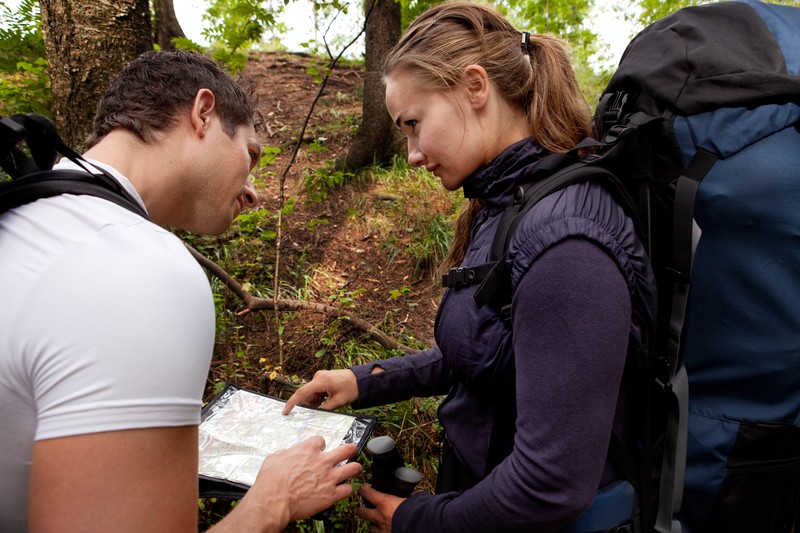Those who spend a lot of time in the wilderness call it dead reckoning and while some people have it naturally, mainly it is being aware of your surroundings.
One tip is to memorize a map of the area as well as travel landmarks such as major roads and calculate how many miles it is from where you are heading out to where they are, before you venture forth.
Here are some others.
It doesn’t matter if you’re in the car or out in natures hiking on trails, here are a few things you can do when you’re out and about that will improve your sense of direction.
• Visualize – Visualization is one of the first steps you’ll always want to take. Whether you are thinking about driving somewhere or walking down trails, you’ll want to visualize the route you’ll take in as much detail as possible, before you start. Picture specific landmarks and where they are in relation to one another. When you begin traveling, compare what you see with what you’ve visualized.
• Pay Attention to the Time – Check out the time before you begin and continue to take note of the time as you pass specific landmarks and once again when you reach your destination. This will help you get a feel for relative distances This will be helpful if you find you’ve missed a turn or went too far. You’ll have a more accurate idea of how far back you’ll need to go.
• Verbalize What You See – Verbalizing anything helps to solidify the information in your brain. Say each landmark out loud while you pass it to reinforce where it is in your mind.
• Take a New Route – Most of us have habits of going one specific way every single day. Our route to work likely hasn’t changed, the same as we don’t usually change the way we go to our family or friends’ houses. Switch up your normal route and imagine different routes on a map, even if its just taking a parallel street a block or two away. This will help you with orienting yourself better.
• Get a Different Perspective – Many times we’ll forget where we parked our car in parking lots. We tend to blame this on getting older, however there are ways you can improve this. As you walk from your car to your destination, turn around and look back at it every 10 seconds or so. This will help you solidify in your memory where your car is, along with familiarizing yourself with what you’ll be seeing on your return trip. For longer distances like hikes, just increase the interval between backward glances.
• Don’t Panic – Panicking happens. It’s important to stay calm when these situations occur. People tend to move quicker when their anxious, and that will potentially get you more lost than you already are. If you find yourself lost, remember STOP: Stop, Think, Observe and Plan.
The key to never truly getting lost in the wilderness (or anywhere for that matter) is to hone your sense of direction to the point you can employ it accurately in virtually any situation.
This takes practice and one way you can get that practice whenever you travel is to turn off the GPS until you truly need it.
For other tips on improving your sense of direction, please visit Tips for Survivalists.
